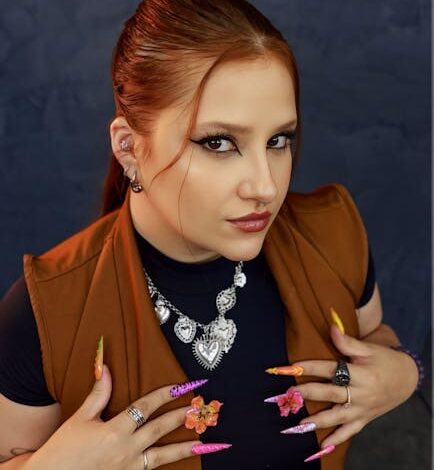A Journey Into the Heart of Labubu

A Journey Into the Heart of Labubu
Estimated Reading Time: 5 minutes
- Labubu, the mischievous plushie monster by artist Kasing Lung, has evolved from a niche art toy to a global pop culture sensation, greatly amplified by its collaboration with Pop Mart’s blind box model.
- Its widespread appeal stems from a unique “adorable monster” aesthetic, blending cuteness with a hint of mischief, which resonates deeply across diverse cultures and age groups, especially within the “kawaii” trend.
- The thriving collector community, driven by the thrill of unboxing, the hunt for limited editions, and social sharing, contributes significantly to Labubu’s enduring popularity and market dynamics.
- Labubu represents a democratisation of art, making designer toys accessible to a broad audience, and offering a tangible connection and nostalgic joy in a digital-first world.
- For enthusiasts, navigating the Labubu craze responsibly involves thorough research for authenticity, active engagement with online communities for information and trades, and mindful collecting within a set budget.
- The Genesis of a Giggling Monster: Kasing Lung’s Vision
- Beyond the Box: The Cultural Resonance of Collectible Art
- Navigating the Labubu Craze: A Collector’s Guide
- The Enduring Appeal: More Than Just a Plushie
- Frequently Asked Questions (FAQ)
In a world saturated with digital distractions and fleeting trends, a mischievous, fuzzy creature with pointy ears and an endearing grin has captured the collective imagination. Labubu, the adorable yet impish monster designed by Hong Kong artist Kasing Lung, has transcended its origins as a designer toy to become a bona fide global phenomenon. Its image adorns merchandise, inspires art, and fuels a passionate collecting community that spans continents. But what exactly is it about this particular plushie that ignites such fervor?
This widespread obsession isn’t merely a passing fad; it represents a deeper cultural shift. Indeed, I made an epic trek across four countries to answer one question: Why is the world going mad for a plushie monster? My journey uncovered layers of artistic intent, psychological appeal, and shrewd market strategy that converge to create Labubu’s undeniable charm. Join me as we delve into the core of this captivating enigma.
The Genesis of a Giggling Monster: Kasing Lung’s Vision
Labubu isn’t just another mass-produced toy; it’s the brainchild of Kasing Lung, an artist whose imaginative universe is populated by a whimsical array of fantastical beings. Born from Lung’s sketchbooks and deeply personal narratives, Labubu first emerged as part of “The Monsters” series. Unlike many characters designed for immediate commercial appeal, Labubu possessed an authentic, almost raw, artistic quality. Its initial iterations were often hand-painted, limited-run art pieces, coveted by a niche community of designer toy enthusiasts.
What sets Labubu apart is its unique blend of cute and chaotic. Its wide, innocent eyes juxtaposed with a slightly menacing grin, often revealing a mischievous tongue, create a compelling duality. This “adorable monster” archetype resonates deeply, appealing to our primal attraction to both innocence and rebellion. It’s a character that invites both comfort and curiosity, a perfect reflection of the complexities of human emotion, wrapped in a delightfully fuzzy package.
The pivotal moment in Labubu’s journey to global stardom came with its collaboration with Pop Mart, the leading force in the “blind box” collectible market. This partnership transformed Labubu from an art-world darling into an accessible pop culture icon. The blind box model – where collectors purchase a sealed box containing a randomly selected figure from a series – introduced an element of surprise, anticipation, and gamification that perfectly amplified Labubu’s inherent appeal, propelling it into the hands and hearts of millions worldwide.
Beyond the Box: The Cultural Resonance of Collectible Art
Labubu’s rise is more than just a marketing success story; it’s a testament to the power of collectible culture in the 21st century. In an increasingly digital world, physical objects that offer tangible connection and a sense of shared experience hold immense value. Labubu taps into a diverse range of psychological and social drivers, fueling its omnipresence.
The “kawaii” (cute) aesthetic, deeply ingrained in East Asian culture and increasingly globalized, is a significant draw. Labubu’s design masterfully balances this cuteness with an edge, making it appealing across age groups and cultural boundaries. For many, collecting Labubu offers a nostalgic return to childhood joy, a simple pleasure in unboxing and discovering a new addition to their collection. For others, it’s an active engagement in a thriving subculture.
The community surrounding Labubu is vibrant and passionate. Online forums, social media groups, and dedicated unboxing channels are buzzing with activity. Collectors share their finds, trade rare editions, and discuss upcoming releases. This sense of belonging, coupled with the thrill of the hunt for limited editions and “secret” figures, transforms collecting from a solitary hobby into a communal experience. The fear of missing out (FOMO) on a coveted release further intensifies demand, creating a dynamic secondary market where rare Labubu figures can fetch exorbitant prices.
Moreover, Labubu represents a democratisation of art. It blurs the lines between fine art, designer toys, and mass-market collectibles. Kasing Lung’s original artistic vision remains at its core, yet its widespread availability through Pop Mart makes it accessible to a much broader audience, allowing people to own a piece of a growing artistic and cultural movement.
Navigating the Labubu Craze: A Collector’s Guide
For those drawn into the enchanting world of Labubu, whether as a casual admirer or a budding collector, understanding how to engage with this phenomenon responsibly and enjoyably is key. The popularity also brings challenges, such as counterfeits and rapidly fluctuating market values.
Actionable Steps for Enthusiasts:
- Research and Authenticate: Before making significant purchases, especially on secondary markets, educate yourself on common tell-tale signs of genuine Labubu figures. Familiarize yourself with official release dates, packaging details, and reputable sellers. Pop Mart’s official channels and authorized retailers are the safest bets for new releases. For older or rarer pieces, cross-reference with established community guides and photos of authentic items.
- Engage with the Community: Join online collector groups on platforms like Facebook, Discord, or Reddit. These communities are invaluable resources for information, trading, and connecting with fellow enthusiasts. You can learn about new releases, participate in discussions, and even find opportunities to trade or buy from trusted members, often at fairer prices than pure reseller platforms. This also enhances the social joy of collecting.
- Collect Mindfully and Sustainably: It’s easy to get swept up in the excitement, but set a budget and stick to it. Collect for personal enjoyment and appreciation of the art, rather than purely for investment. While some figures do appreciate in value, the market can be volatile. Prioritize figures that genuinely resonate with you. Consider displaying your collection proudly, rotating pieces, and taking good care of them to preserve their condition and your enjoyment.
Real-World Example: The “Flower Bomb” Hunt
Consider Sarah, a new Labubu collector who fell in love with “The Monsters Flower Bomb” series. Instead of buying blind boxes impulsively, she joined an online Labubu community. There, she learned about release strategies, common fakes, and connected with a seasoned collector who had an extra “Secret” variant from the series. Through careful verification and a fair trade, Sarah not only acquired her dream figure but also gained a mentor and a friend in the community, enriching her collecting experience far beyond just owning the item.
The Enduring Appeal: More Than Just a Plushie
As we conclude our journey into the heart of Labubu, it becomes clear that its immense popularity is no accident. It’s a meticulously crafted phenomenon built on artistic integrity, clever marketing, and a deep understanding of human psychology. From the whimsical imagination of Kasing Lung to the strategic distribution power of Pop Mart, Labubu has found its sweet spot at the intersection of art, commerce, and community.
The “madness” for this plushie monster isn’t irrational; it’s a vibrant expression of our collective desire for wonder, connection, and a touch of mischief in our lives. Labubu offers a tangible escape from the mundane, a nostalgic embrace of childhood, and a gateway into a global community of like-minded enthusiasts. It reminds us that even in the most unexpected forms, art can transcend boundaries and bring joy to millions.
Whether you’re drawn to its adorable monster aesthetic, the thrill of the blind box, or the camaraderie of its collecting community, Labubu stands as a compelling testament to the evolving landscape of popular culture and the enduring power of a well-crafted character.
Frequently Asked Questions (FAQ)
What is Labubu and who created it?
Labubu is a mischievous, fuzzy monster character with pointy ears and an endearing grin, created by Hong Kong artist Kasing Lung. It originated as part of his “The Monsters” series and has since become a global pop culture phenomenon.
How did Labubu become so popular?
Labubu’s popularity surged after its collaboration with Pop Mart, a leading blind box collectible company. The blind box model, combined with Labubu’s unique “adorable monster” aesthetic, the “kawaii” appeal, and a vibrant online collector community, propelled it into mainstream global recognition.
What are some tips for collecting Labubu figures?
To collect Labubu figures responsibly and enjoyably, it’s recommended to research and authenticate figures, especially on secondary markets, to avoid fakes. Engage with online collector communities for information and trading, and collect mindfully by setting a budget and prioritizing figures that genuinely resonate with you rather than purely for investment.



